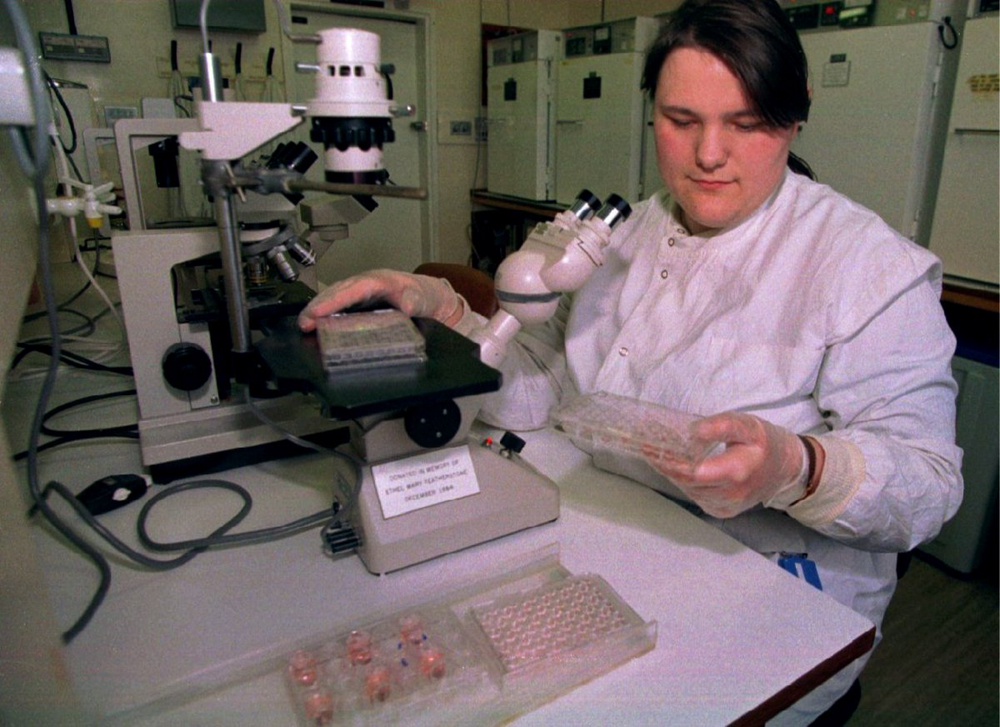
Some of the most devastating forms of cancer have genetic similarities even though they strike different body parts, AFP reports according to new studies out Thursday. The new research -- one study focused on a form of leukemia, in the New England Journal of Medicine, and a second on endometrial cancer, in Nature -- could offer a pathway to new, more effective treatments. The new findings challenge the previous approach of classifying tumors based on the body part where they are first observed, and add fuel to the growing trend of differentiating tumors based on their genetic profile. The research came as part of a vast program undertaken by the National Institutes of Health called the "Cancer Genome Atlas Project," which aims to decode the genetic pattern of 10,000 tumors from 20 different cancers. Thanks to that analysis, scientists had already found genetic relationships between certain forms of breast, lung, and colon cancers. For example, one type of breast cancer presents genetic mutations very similar to the ones found in ovarian cancer, and colon cancers often have mutations found in breast cancer. The researchers said around half of all lung cancers could respond to treatments used against other kinds of tumors. The latest study found the most aggressive form of endometrial cancer, which affects the uterine lining, is similar to more grave forms of breast and ovarian cancer. "The clinical and pathologic features of uterine serous carcinoma and high-grade serous ovarian carcinoma, or HGSOC, are quite similar," wrote the authors of the study published in Nature, which analyzed more than 370 tumors. Likewise, "HGSOC shares many similar molecular features with basal-like breast carcinoma," added the team, which was directed by Douglas Levine of Memorial Sloan Kettering Cancer Center, in New York. Researchers have also determined that a certain mutation, already identified in other tumors, is more common in relatively understudied uterine tumors than in any other cancer under analysis by the genome project. Several drugs have already been developed to target the mutation. Now, thanks to the new data, such drugs can be harnessed against endometrial cancer, which kills 8,000 people, and is diagnosed in 50,000, each year. The research on acute leukemia, which included 200 patients, identified at least 260 genetic mutations implicated in the blood cancer, but wasn't able to detect any that are systematically found in the most serious forms. Acute myeloid leukemia, the most common acute leukemia found in adults, is diagnosed in 14,000 Americans each year and kills 10,000.





Some of the most devastating forms of cancer have genetic similarities even though they strike different body parts, AFP reports according to new studies out Thursday.
The new research -- one study focused on a form of leukemia, in the New England Journal of Medicine, and a second on endometrial cancer, in Nature -- could offer a pathway to new, more effective treatments.
The new findings challenge the previous approach of classifying tumors based on the body part where they are first observed, and add fuel to the growing trend of differentiating tumors based on their genetic profile.
The research came as part of a vast program undertaken by the National Institutes of Health called the "Cancer Genome Atlas Project," which aims to decode the genetic pattern of 10,000 tumors from 20 different cancers.
Thanks to that analysis, scientists had already found genetic relationships between certain forms of breast, lung, and colon cancers.
For example, one type of breast cancer presents genetic mutations very similar to the ones found in ovarian cancer, and colon cancers often have mutations found in breast cancer.
The researchers said around half of all lung cancers could respond to treatments used against other kinds of tumors.
The latest study found the most aggressive form of endometrial cancer, which affects the uterine lining, is similar to more grave forms of breast and ovarian cancer.
"The clinical and pathologic features of uterine serous carcinoma and high-grade serous ovarian carcinoma, or HGSOC, are quite similar," wrote the authors of the study published in Nature, which analyzed more than 370 tumors.
Likewise, "HGSOC shares many similar molecular features with basal-like breast carcinoma," added the team, which was directed by Douglas Levine of Memorial Sloan Kettering Cancer Center, in New York.
Researchers have also determined that a certain mutation, already identified in other tumors, is more common in relatively understudied uterine tumors than in any other cancer under analysis by the genome project.
Several drugs have already been developed to target the mutation. Now, thanks to the new data, such drugs can be harnessed against endometrial cancer, which kills 8,000 people, and is diagnosed in 50,000, each year.
The research on acute leukemia, which included 200 patients, identified at least 260 genetic mutations implicated in the blood cancer, but wasn't able to detect any that are systematically found in the most serious forms.
Acute myeloid leukemia, the most common acute leukemia found in adults, is diagnosed in 14,000 Americans each year and kills 10,000.


 +7 (777) 001 44 99
+7 (777) 001 44 99















































